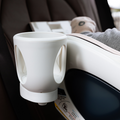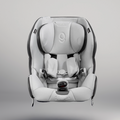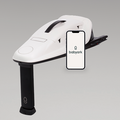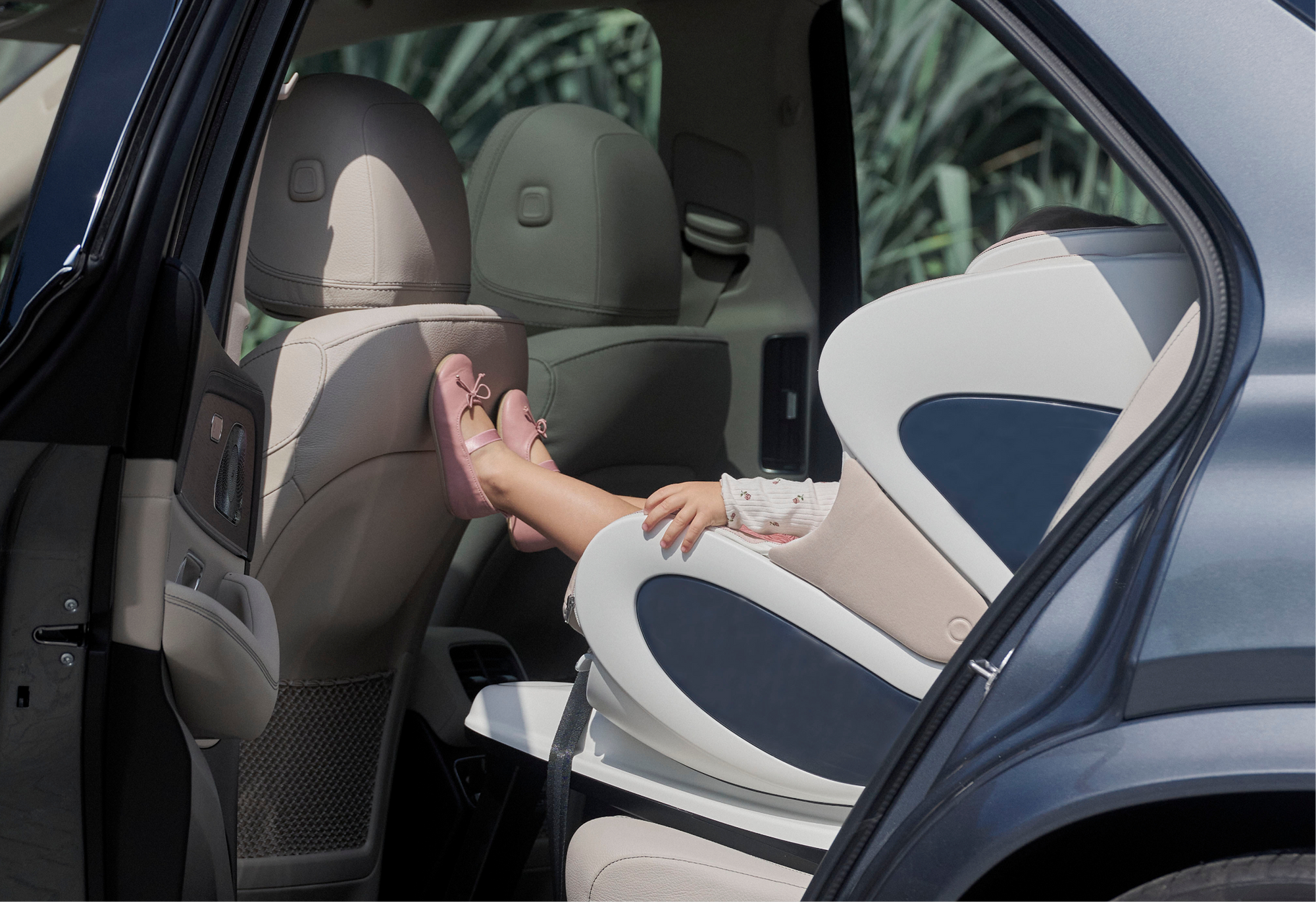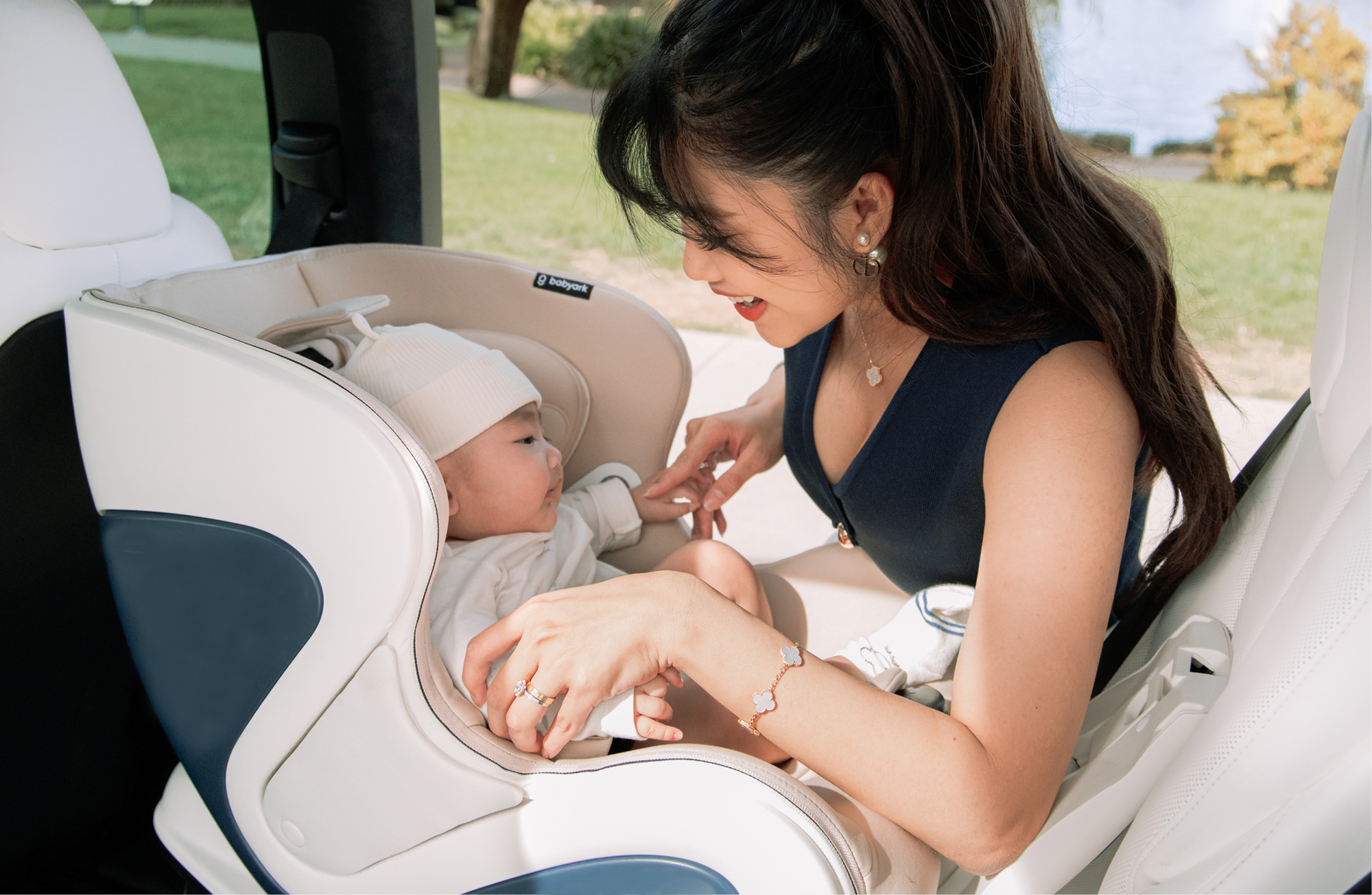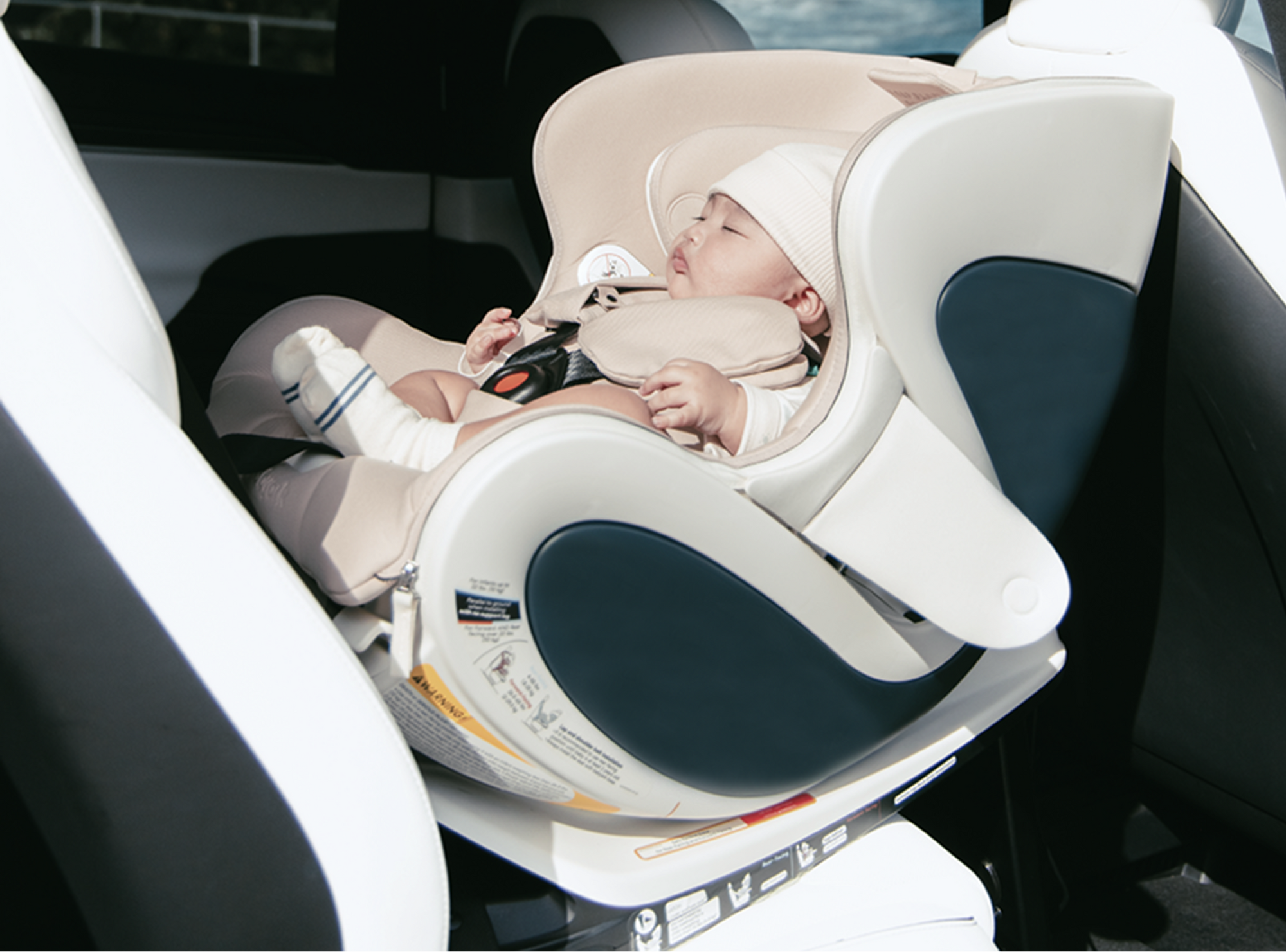Understanding the right time to switch from rear-facing to forward-facing car seats is crucial for your child's safety.
In this article, we’ll debunk some common myths about forward-facing seats and car seat transitions, and provide you with the facts you need to make informed decisions so you can feel confident about your child’s safety.
Myth 1 - One and Done? The 1st Bday is a Sign to Switch to Forward Facing (False!)
Many parents believe that once their child turns one year old, it's safe to switch to a forward-facing seat. However, this is a misconception that can compromise your child's safety. Experts recommend that children remain in a rear-facing car seat for as long as possible (within car seat weight and height limits).
The American Academy of Pediatrics (AAP) suggests keeping children rear-facing until they reach the highest weight or height allowed by their car seat's manufacturer.
This is because rear-facing seats provide better support for a child's head, neck, and spine in the event of a collision. These components of a young child's body are particularly vulnerable and require additional protection, with positioning in a manner rear-facing seats are especially equipped to provide.
Let’s get into it a bit more…
Understanding Rear-Facing and Forward-Facing Guidelines
Infant Car Seat Weight Limit
Typically, infant car seats are designed for babies up to 30-35 pounds, and have height limits as well. These limits are an essential safety measure to ensure that the child is adequately supported and positioned correctly to provide maximum protection in the event of a car accident.
Once your child exceeds the indicated weight or height limit (which differ by manufacturer, so make sure you check your manual), it's time to consider a convertible seat that can accommodate both rear and forward-facing positions. This does not mean it’s time to switch to forward facing, it simply means it’s time to “upgrade” your child to a car seat better suited for their size.
Convertible seats offer extended use and can be adjusted as your child grows, accommodating their changing safety needs.
When to Switch to Forward Facing
As alluded to above, the transition to forward-facing should not be based (solely) on age. Factors such as weight and height play a more significant role in determining the appropriate time to make the switch. It's crucial to regularly check your child's growth against the car seat's specifications to make sure they’re still within the recommended limits for optimal safety. Outgrown rear-facing? That’s when you switch.
Myth 2: Forward-Facing is by Default More Comfortable for the Child (False!)
Parents often assume that their child will be more comfortable in a forward-facing seat because they can see more of their surroundings, or because it’s more pleasing to the parent to see their child more easily, thus they assume the child must feel the same way.
While it might seem like forward-facing seats offer a better view, the rear view can be quite lovely, and either way, it’s not about the view, it’s of course about the safety.
Also, what we perceive as comfortable to our adult bodies is not necessarily equivalent to their comfort. Next time your child sits on the floor with their legs pretzeled backwards and you wonder how it’s comfortable for them, remember exactly this. Their bodies are built differently than ours, and what’s comfortable to one may not be to the other! Often, our kids are perfectly content to sit facing backwards well beyond what we would envision seems a position we would choose, and are just as likely to stare at us in wonder in our straight-backed car positions as they luxuriate in their reclined cradle of rear-facing splendor.
Ensuring Comfort in Rear-Facing Seats
-
Infant inserts: Many car seats such as babyark come with infant inserts to help a smaller infant fit snugly into their car seat. These too have weight limits, so make sure to check your car seat recommendations. babyark’s infant insert is recommended for use up to 11 pounds.
-
Adjustable Straps and Recline: Many rear-facing seats come with adjustable straps and recline features to ensure your child is comfortable while maintaining safety. These adjustments can help customize the fit of the seat to your child's needs, ensuring they’re secure yet comfortable during travel.
-
Engagement: Of course it’s not out of sight, out of mind. Your children can be part of the car ride even if rear facing. Engaging them with music or playing age-appropriate games ensures they feel a part of the group. If you want to enable them to have self-serve entertainment, make sure that any toys are soft and car-seat friendly, and are not attached to the car seat.
When a Child Can Face Forward in a Car Seat, Keep ‘Em That Way
Once your child is in a forward-facing seat, they should still remain in the proper car seat in the back seat until they are mature enough to sit properly without slouching or leaning, and are ready to transition to booster and out.
Proper seating posture is crucial for seat belt effectiveness and overall safety. Each age range and size has its allocated seating recommendations for a reason. Always check against car seat manufacturer recommendations and your kid’s specs to make the right decision for their safety.
Myth 3: Forward-Face One, Forward-Face Them All
Some parents make the switch for one child and allow a younger sibling to seize on the moment and make the case for switching them as well. Even with twins, it is possible that one may be ready to forward-face while the other should stay rear-facing.
Just because you have made the switch to forward-facing with one child, that does not put rear-facing as a concept in your rearview. This is not the case, especially if you have multiple children of various sizes and ages.
Keeping younger siblings in rear-facing seats or rear-facing in convertible car seats as long as possible should remain a priority. Rear-facing continues to be the safest option for young passengers.
When to Turn A Convertible Car Seat to Forward-Facing
Height and Weight Considerations:
Before making the transition to a forward-facing seat, ensure your child meets the seat's height and weight requirements. These requirements are set by the manufacturer to ensure the safety features of the seat are effective for your child's size. Once they max out of their rear-facing capability, you must make the switch. But, even if your child meets the minimum required for forward-facing, it’s best to keep them rear-facing as long as possible
Types of Car Seats by Age:
Understanding the different types of car seats available and their appropriate age ranges can help you make an informed decision. Convertible seats and all-in-one seats offer flexibility for growing children. These seats can be adjusted to accommodate the child as they grow, providing a cost-effective solution while maintaining high safety standards. You can use an infant seat from newborn and graduate, but convertible car seats (and in some cases, all-in-ones) make effective choices from day one, especially when constructed with maximum safety in mind, for all ages.
Convertible car seats go from rear-facing to forward-facing, and feature five-point harnesses for maximum protection. Your child will transition into booster seats and eventually be able to sit in a seat with a seatbelt (when they meet minimum criteria). And, don’t forget, even when your threenager becomes a tweenager and a teenager and is eventually old enough to sit in the front seat, the safest place for a child is in the back!
Check out our blog post on which car seat is appropriate for which age, or read NHTSA (National Highway Traffic Safety Administration) recommendations here.
Myth 4: Backless Booster Seats are Just as Safe as Forward-Facing Car Seats
The next stage from forward-facing car seats is traditionally a booter seat with more structure or a high-backed booster seat, after which many transition to a backless booster seat for convenience simply for that “boost” to help the child situate properly at seat belt levels.
While backless booster seats are often a convenient choice for travel for these older children, they are not suitable for younger children who have just transitioned from rear-facing seats. Booster seats are designed for older children who have outgrown their forward-facing seats. They are meant to position the seat belt properly on a child's body, which is crucial for safety but does not provide the same level of support as a harnessed seat.
Understanding Booster Seat Requirements
Booster Seat Age and Requirements:
Generally, children are ready for booster seats when they graduate from their forward-facing seat, anywhere from 40 to 65 pounds and based on height. This guideline helps ensure that the seat belt fits properly across the shoulder and lap, reducing the risk of injury in an accident.
It's crucial to follow the specific guidelines of the booster seat you choose, and remember that averages are merely averages, and all children are different! Measure and check, always. Traditionally, children “graduate” from booster seats around between 8-12 years old, at a minimum of 4’9”.
Height and Weight for Booster Seat:
Ensure your child meets both the height and weight requirements before transitioning to a booster seat. This ensures that the booster seat can perform its function effectively, providing the necessary safety for your child.
Myth 5: It's Safe for Children to Ride in the Front Seat At An Early Age
Parents might be tempted to let their children ride in the front seat for convenience (or because “all my friends are doing it!”) 🙄
We get the difficulty of not succumbing to this pressure. But sitting in the front seat can be dangerous for young children, and is simply not as safe for any children as sitting in the back.
OK, When Can My Child Ride in the Front Seat?
Experts recommend that children under 13 years old ride in the back seat. This is because the back seat is statistically safer for children, offering more protection in the event of a crash. Front seats are equipped with airbags, which are designed for adults and can pose serious risks to young children, potentially causing injury.
When In Doubt, Reach Out! Digital and In-Person Car Seat Checks, and CPSTs
Want advice on the best car seat setup for your child? Find a Child Passenger Safety Technicians (CPST) in your area, or consult with one of the two we have on staff!
Conclusion: Prioritizing Safety Over Convenience
Understanding the facts about car seat safety ensures that you are making the best decisions for your child's well-being. While it may be tempting to transition to a forward-facing seat earlier, the safety benefits of keeping your child rear-facing as long as possible are significant. Making informed decisions based on expert recommendations can greatly enhance the safety of your child while traveling.
-
When to Turn Car Seat Forward Facing: Always adhere to the manufacturer's guidelines for weight and height before making the switch. These guidelines are designed to provide the best possible protection for your child based on their size and developmental stage.
-
Forward Facing Car Seat Rules: Keep informed about the latest recommendations from safety experts to ensure your child's safety on the road. Regularly reviewing and adhering to these guidelines will ensure that your child is as safe as possible while in a vehicle.
-
Next Steps After a Front-Facing Convertible Car Seat, Into Booster Seats and Beyond: Make sure you align your car seat choice with your child’s growth, and only transition when it makes sense and is legally permissible for their safety.
While there are many myths surrounding forward-facing seats, being informed about the facts ensures that you prioritize safety over convenience, and fact over opinion.
Always consult your car seat's manual and stay updated with recommendations from child safety organizations. By doing so, you can confidently make decisions that protect your child's safety on every journey.
babyark is the only convertible car seat to feature anti-rebound bar, front load leg, and rigid LATCH, allows extended rear-facing and can comfortably fit your child forward-facing through 65 pounds or 6 years old.
Read more about babyark’s holistic approach to safety.
